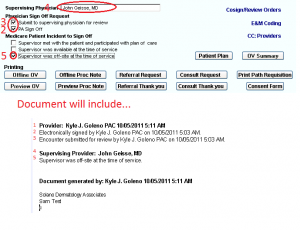Most of our offices and Physicians will be using an iPad to walk around the office with, see who is in an exam room, and view their history. They will be able to enter information into the EHR with the iPad during the visit. But the general idea is that they would then chart most of the visit at their desk, using a desktop computer with a keyboard and mouse.
Currently there is no native application for the iPad. We would be connecting to the windows environment through the iPad. Because the software isn’t made for the iPad, there may be things that will be frustrating trying to use the system in this manner.
The iPad is the future, with a native application allowing complete access to the EHR in a way that is easy to view and enter information, but this app doesn’t exist yet (maybe a year out…?)
The new iPad2 is light, uses touch input and has a very good battery life (reported 10 hours), which makes it ideal in many ways.
We cannot, at this time, install desktop computers in each exam room. Besides the cost, the practitioner/medical assistant would have their back partially turned to patients when dealing with the EHR.
The other option, is to have a laptop computer. I see other offices go with this route. A laptop will allow for much better use of the EHR when in the room. (some use convertible tablets that allow pen input as well). The problem with this, is that they are heavy, difficult to use, unless you set it down somewhere (makes it really difficult to use in the hallway), and their battery life is generally poor. We would have to have extra batteries, and sometime during the day we would have to plug it in, or switch the battery (hoping that the backup was properly charged).
What about an iPad case with a real key board?
What about a tablet PC or a netbook?
I have the first gen iPad, and I have a case with a real key board (the battery is separate and has to be charged via usb – I’m not certain of it’s battery life). I’ll have to do some research to see if they have come out with cases with key boards for the new iPad. The new iPad is thinner, and may not fit in the old cases, and we would have to wait for a manufacturer to sell an iPad2 keyboard case.
Adding a key board does add a bit of weight, and then makes the iPad a little more difficult to use, (more like a laptop, but without a mouse or fingerpad). But it would be fairly inexpensive, and if after using it for a while we decided to abandon it, we would still have the iPads to use.
The tablet PC is what I originally thought would work best.
Most of the new competitors to the iPad run android, and it would be exactly like the iPad, except more expensive and not as good a battery life, and less likely that an app would be released for android before apple.
There are a few Windows tablets. One of the first new lower cost tablets available is the HP slate. I actually purchased an HP slate tablet thinking it would work best. It has a five hour batter life and the battery is not swappable, so we would have to dock it occasionally throughout the day to charge it. You can use your fingers to navigate it, but it works best with its stylus. It is a little bit smaller than the iPad, which makes it easier to carry around and hold (although it is probably slightly heavier than the new iPad). If you docked it in the room the dock could have a keyboard and mouse attached making it more of a desktop, but a very small screen. (It has a usb port). And you would then have your back to the patient again.
There are other larger windows tablets available at more cost ($1900 plus peripherals (battery, docks etc) versus iPad at $630. I think battery is still an issue. I would suggest one from motion computing. They have one with a swappable battery. It weights 3lbs, versus the new ipad at about half that weight 1.6lbs. Both have integrated cameras, but I caution that they won’t work seamlessly with our EMR. We have a better chance that a native iPad app will come out and the camera will work with the EMR, than getting a windows tablet camera to integrate.
Of note, the iPad I was going to order would have a 3G radio. If we lost our internet connection (our T1 went down), we could activate the subscription for the 3G, which would cost $25 for a one month no contract wireless connection. We could then still connect to our hosting provider via 3G. Again, this would take some configuring of a VPN to get working properly, but I think it would be a viable option to allow us to still use the EMR off our network.
I think a netbook would be a poor option. Most of them have pretty slow processors, but this is really just a thin client because we are using Remote Desktop via VPN into our hosting company. So I don’t think the speed will suffer any. It would be small and easier to carry than a laptop, but still difficult to hold and chart (especially with the small screen). The EHR templates have a lot of information on them and are both hard to see and click on boxes on the smaller screens. Battery life issues come up again, and most don’t have swappable batteries like the laptops do.
In light of the above, we have decided to order iPads for our providers and medical assistants.













 Protected by Patchstack
Protected by Patchstack